Tasty UI Concepts for Eating and Cooking
Tasty UI Concepts for Eating and Cooking Set of diverse interface design concepts on the theme of food, cooking and eating. UI designs for mobile applications, websites and landing pages.
Many decades ago famous writer George Bernard Shaw, known for his sharp tongue and sparkling sense of humor, said: “There is no love sincerer than the love of food.” With the course of time nothing actually has changed: food is still among the most important, discussed, and loved aspects of everyday life. The sphere of design features it in diverse faces and directions combining traditional visualization with new techniques and approaches.
UI design is no exception. The basic idea behind UI/UX design is to create interfaces solving problems and satisfying users’ wishes. As eating is one of basic human needs, no wonder we can find numerous applications and websites devoted to this theme. We also take active part bringing new ideas and polishing existing solutions in design projects and concepts for websites and mobile apps. As well as with real meals presentation, visual design for digital products of this sort is a real food for thought.
Like with a nicely performed meal, well-done attractive UI is able to increase the level of users’ expectations and catch their attention and senses immediately. However, even the most creative delivery of a meal is not able to save the situation if the food itself is low-quality and vapid. The same happens with UI. If the designer doesn’t think much about the product itself, its logic, convenience, effective layout, being focused only on beautiful presentation, the risk of creating dead product is incredibly high.
In our previous article devoted to role of icons in UI we mentioned: the best chefs always say that everything put on the plate should be edible. According to the latest trends, we support the same idea when it comes to icons as well as the other elements of layout: everything that is put on the screen should be functional. Therefore, any icon used in the interface should have its meaning and function. Without it, an icon is just a kind of empty stub, making the layout of the screen or web page dirty with unnecessary elements. This philosophy works well with other interface elements like copy, illustrations, photos, animation, color combinations, typography choices, etc.
Here we have collected 10 different UI design concepts accomplished by studio designers. They represent different aspects reflecting the topic of food: some of them are devoted to the cooking theme, some present the direction of eating out, the others are connected to selling food. The nature of functionality platforms is also different: the concepts feature interfaces of mobile applications, websites, and landing pages. If you are interested to see more details, just follow the links. Let’s review them all. Bon appetite!
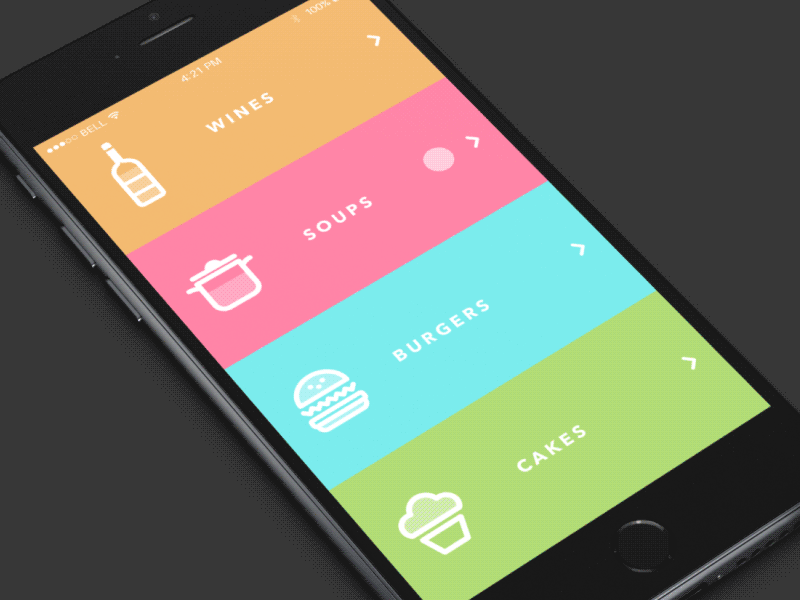
The first of the presented concepts is a mobile application for restaurant visitors. It features animated interaction with the screen presenting basic view of restaurant menu. The names of categories are presented via an effective combination of highly readable copy and clear meaningful icons for quick visual perception. Simple design with animated accents which immitate interaction with physical objects is a good way to bring positive user experience.
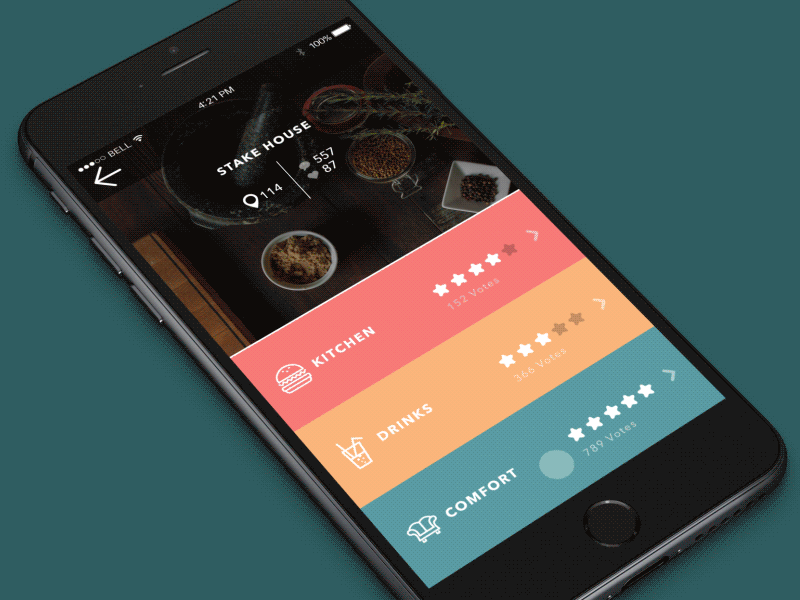
Another piece of interaction for the same app shows one more block of its functionality. It’s a simple restaurant app for checking in and receiving feedback from clients and visitors of different restaurants. The main idea was to provide a simple and easy-to-use interface based on animation and color accents. The restaurant profile shows how many visitors were there and how many of them liked it. The whole app enables to vote for several different features of each restaurant, such as “cuisine”, “drinks”, “comfort”, “service” etc. Visual support with high-quality photo content featuring food and drinks enhances the stylish looks and feeling the theme.

Here is the concept of a cooking website where users can find interesting recipes, add their ones and read useful articles devoted to food topic. The piece of interface is iPad version of layout. The designer chooses light background, adding air to the screens and providing an environment for efficient readability for different blocks of copy. Color markers are used to define the categories of content.
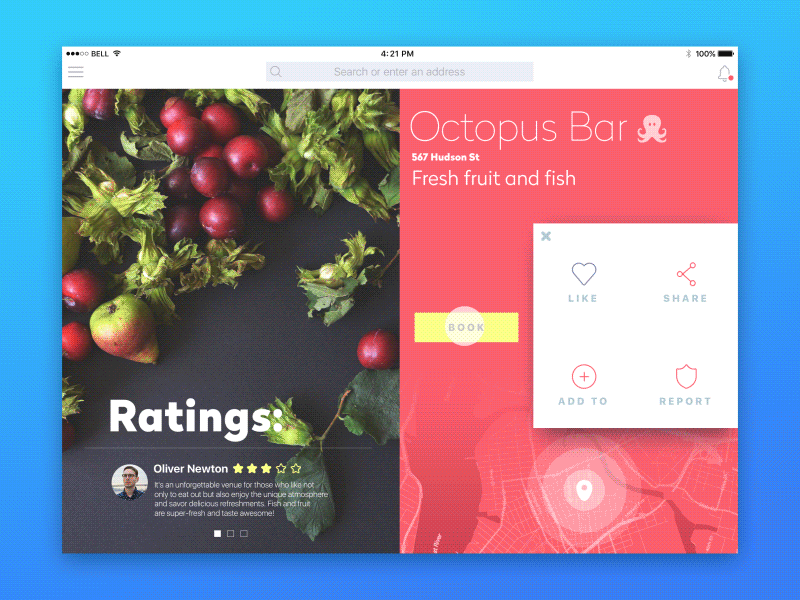
This one is an iPad application for booking tables in restaurants. To show its functionality and strengthen it with gorgeous food images, the designer chose an experimental bar profile page. It’s a venue where users can order fruit and seafood, and the profile page contains everything to go with booking a table, sharing, and saving this venue. The animation shows the interactions of user flow showing what happens once the “Book” button is tapped.
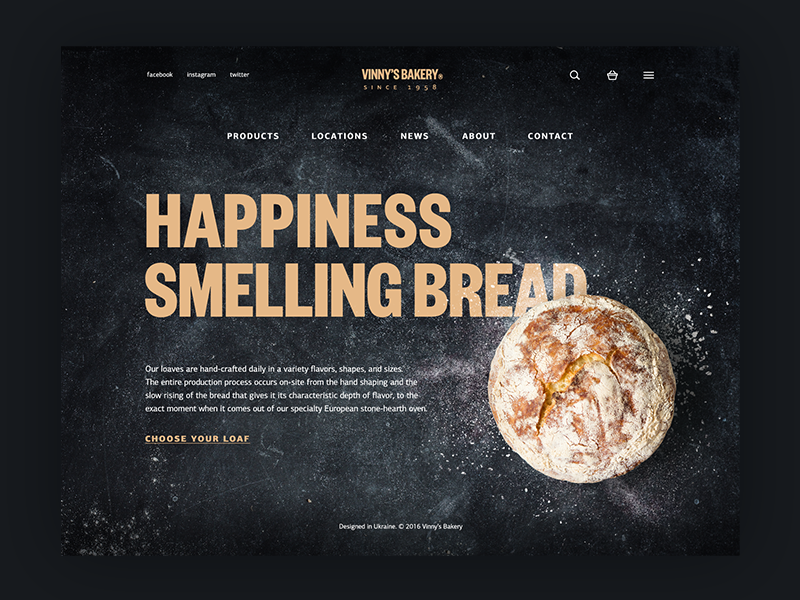
This one a the design concept of a website for a small bakery selling homemade bread. Here you can see the home page presenting the service, providing the links giving more information about the company and the items it offers as well as links to social accounts. The designer was keen to activate different techniques of visual perception via headline, images, background and copy block so that users could get the basic information immediately and got the warm feeling of freshly baked bread. He followed the philosophy of minimalism which is user-friendly, attractive and informative. On the basis of the design solutions, it is easy to assume that this is the service positioning itself as a producer of upmarket products which are exclusively hand-made and presumably because of that reason cost higher than average bread in the supermarket. Harmony is the style provided by the webpage: dark background, branding element as a central element of a header, strong and clear headline establishing positive emotional message, visual elements enabling immediate perception of the theme and setting strong visual association with tasty pastry, short text block describing basic benefits of the product and clear visible call to action.
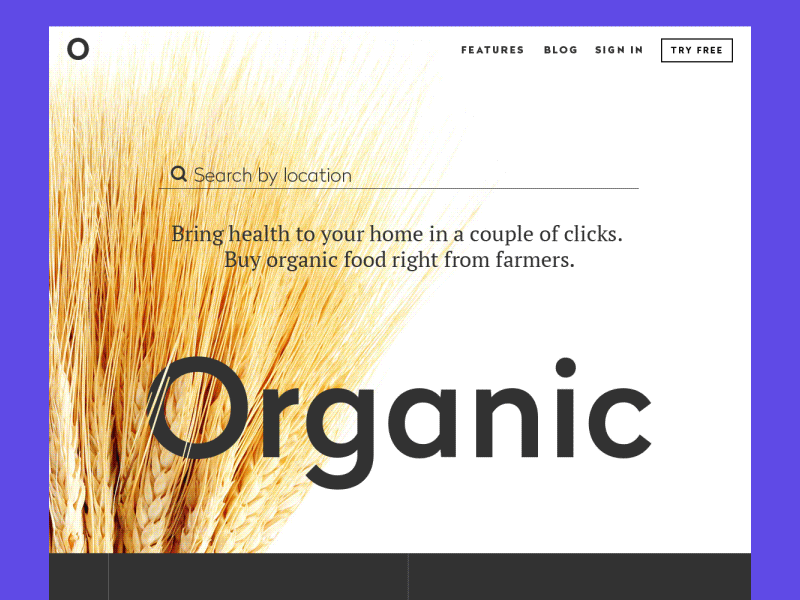
The aim of the landing page above is to promote a shop of organic food. It is composed of several blocks presenting the name of the shop, and products, highlighting some important aspects of service, call to actions and testimonials. The designer sets the purpose to make it informative but not overloaded, and appealing but not aggressive. To make the experience more attractive and engaging, the process of scrolling the page was livened up with animation, and the visual elements were selected to support the general theme and provide the immediate visual perception of the basic idea.
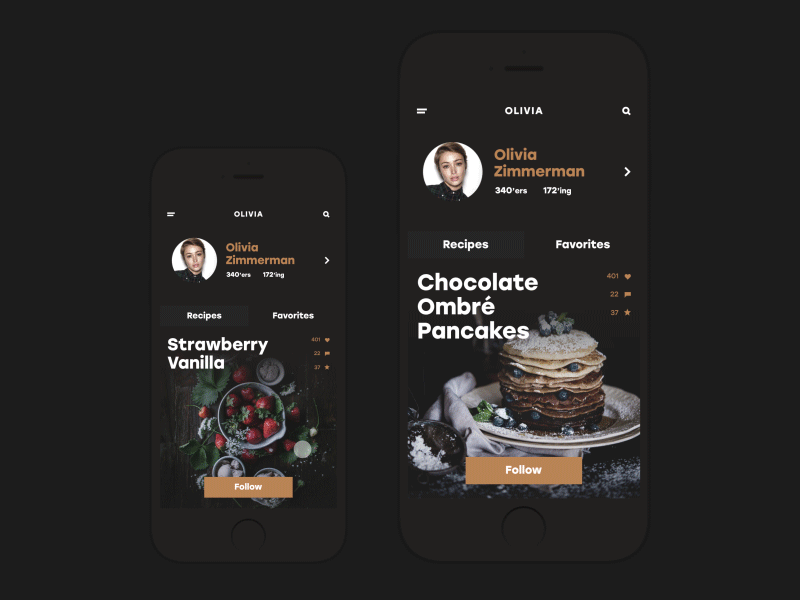
Here is the interface of a social network for those who like cooking and want to communicate and get updated about this topic in a fast and easy way. The app enables using all the scope of social functions: sharing recipes, making discussions, chatting, following, uploading images, collecting favorites, and so on. Nice and smooth animations support the general stylistic concept and show interactions within app functionality. As we usually do here in Tubik, the designer followed the idea of keeping the balance of usability and attractive looks of the interface.
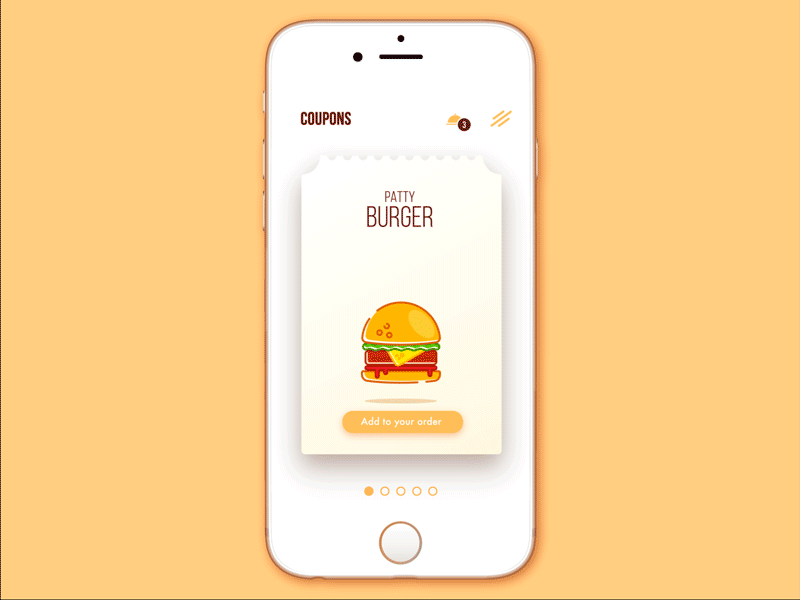
No doubt, good food is a great way to feel the world more positively and that is the key message behind the presented animated interface design. This is the concept of a mobile application for a chain of cafes providing the functionality for saving coupons and discounts and then using them to buy tasty stuff. Interface animation is added to make the screen and interactions more lively and engaging and enable easy micro-interactions. Icons and illustrations look bright and add positive vibes; even small layout elements like the icon for notifications are reflecting the basic theme and support the consistency of the general stylistic concept.
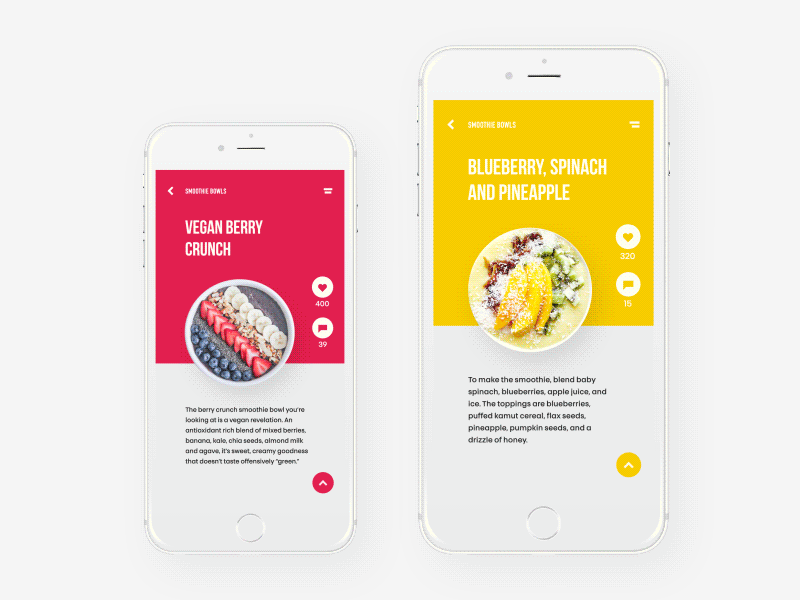
Here you can see the screens of the mobile app organized around the idea of a healthy lifestyle and providing recipes and tips on healthy food. Engaging graphic elements and correspondent color solutions are used to set the theme as well as enable fast visual perception of information which is supported with unobtrusive motion design accents. Animation is also used to show various interactions with a product. Together all those features support a user-friendly, attractive, and informative interface design.
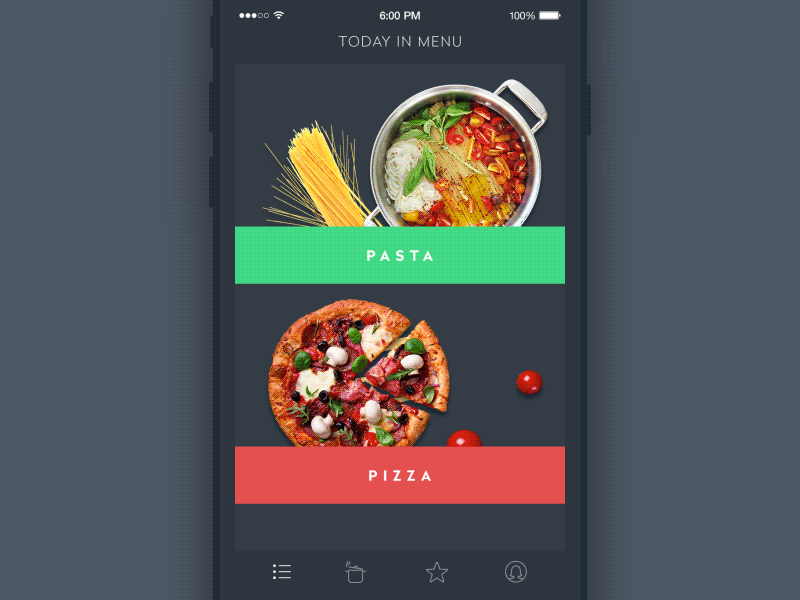
GIF Animation for Recipes and Cooking
This is a design concept for the recipe application. With it, users can add recipes to their collections or find the ones online, categorize and organize their recipe books and categories, form menus and shopping plans. So, here you can see some interactions livened with motion design. They feature the process when the user is choosing an item from the list of categories and then from the list of particular recipes in one category. The implementation of the concept is available free in source code on GitHub.
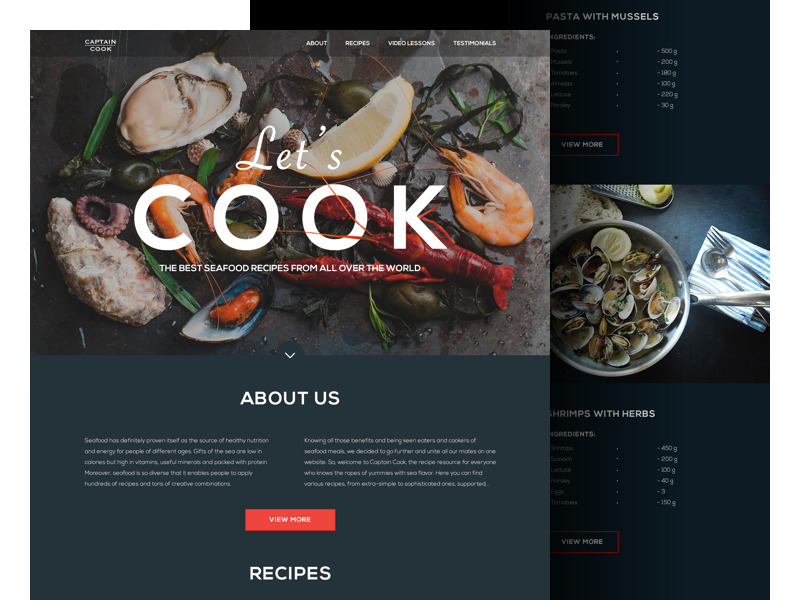
This sample presents a landing page for a website collecting recipes for meals with seafood from all over the world. Again, the webpage looks catchy due to high-quality graphic elements, strengthened by dark background to make the images of meals look even more delicious and also create a stylish feel for the general visual presentation of the layout. The landing quickly provides a general understanding of the website’s purpose and content and features different sections that could be interesting for users.
So, practice shows the diversity of techniques and methods to make an app or website tasty and attractive. Nevertheless, to retain users, trendy and pleasantly-looking design should just cover effective functionality and user-friendly solutions. Otherwise, a beautiful design will work like a cover without a sweet inside and that is the fastest way to lose the users. Put usability and functionality first, think over the logic, transitions, and intuitive navigation – and visual design will become the great icing on the cake!
Today’s list is over but studio practice is full of many other interesting examples of design concepts for different purposes and needs of modern users. Don’t miss new presentations in our future posts.
Useful Articles
Here’s a set of articles on more aspects and best practices of user experience design.
Error Screens and Messages: UX Design Practices
Visual Dividers in User Interfaces: Types and Design Tips
Directional Cues in User Interfaces
How to Make User Interface Readable
Basic Types of Buttons in User Interfaces
Negative Space in Design: Practices and Tips
How to Make Web Interface Scannable
UI/UX Design Glossary: Navigation Elements
Originally written for Tubik Blog, graphic and video content by tubik
- English
- Ukrainian



